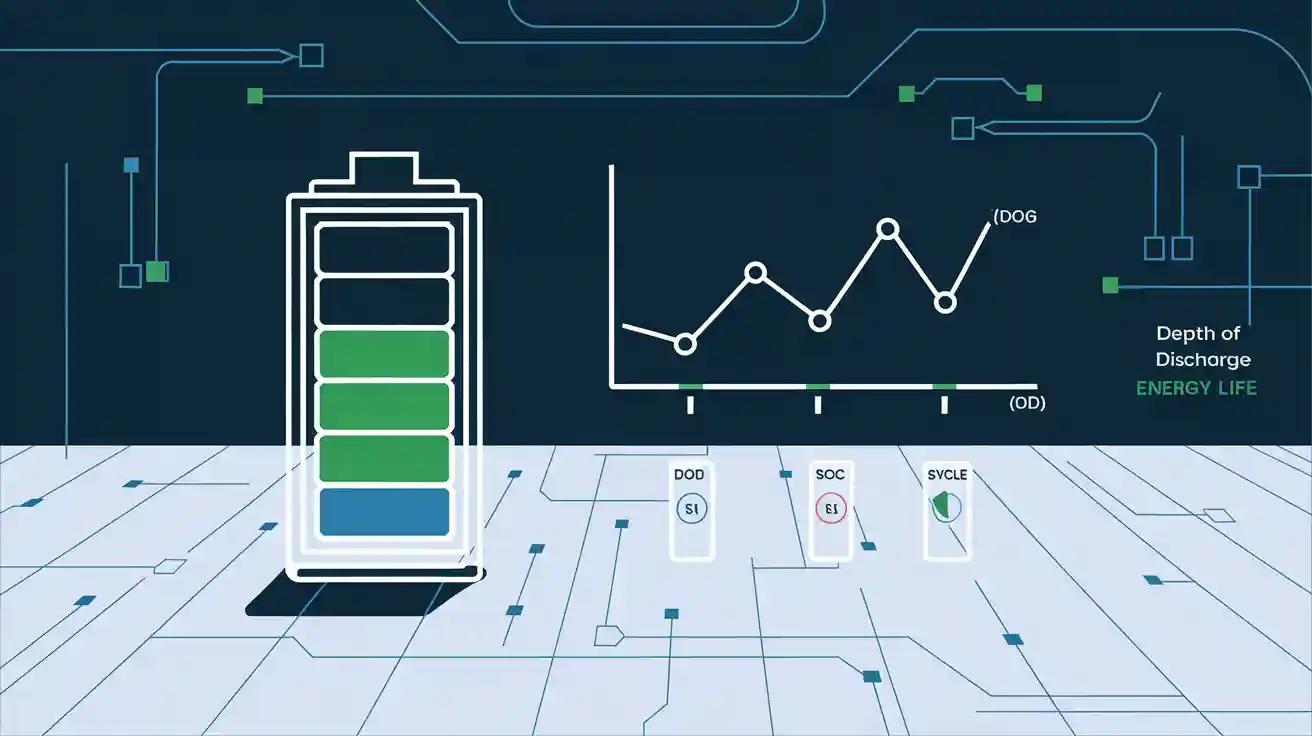
一句话定义
Depth of Discharge (DoD) is the percentage of a battery’s total capacity that has been used during a discharge cycle, serving as a critical metric for battery performance, lifespan, and safety.
详细说明
DoD quantifies how much energy has been drawn from a battery relative to its full capacity. For example, if a 10 kWh battery has delivered 8 kWh, its DoD is 80%. DoD is the complement of State of Charge (SoC): DoD = 100% – SoC. Managing DoD is essential because deeper discharges (higher DoD) generally reduce the total number of cycles a battery can endure before significant capacity loss. Modern Battery Management Systems (BMS) monitor and control DoD in real time to prevent over-discharge, optimize battery health, and ensure safety (Hinen, Wikipedia).
Key Components of DoD
- Battery Chemistry: Different types of batteries have different optimal DoD ranges. Lithium-ion batteries can typically sustain 80–90% DoD, while lead-acid batteries are best kept at 30–50% DoD to maximize lifespan (Unik Batteries).
- 周期寿命: The deeper the discharge, the fewer cycles a battery can complete. For instance, a lithium-ion battery may achieve 3,000–5,000 cycles at 80% DoD, but over 8,000 cycles at 50% DoD (Renogy).
- Battery Management System (BMS): BMS technology is crucial for monitoring DoD, preventing over-discharge, and balancing cell performance, especially in advanced lithium battery packs.
- Environmental Factors: Temperature and load profiles affect how much DoD a battery can safely handle. Extreme temperatures can accelerate degradation at high DoD.
Real-World Applications
- Electric Vehicles (EVs): High DoD (70–90%) is often used to maximize driving range, with BMS ensuring safe operation.
- Renewable Energy Storage: In solar+storage systems, DoD is managed to balance usable energy and battery longevity. For example, Yungbang’s custom lithium battery packs for smart home and industrial applications are specified with DoD limits in datasheets to maximize cycle life and meet international standards.
- Industrial Equipment: Proper DoD management reduces operational costs and extends battery replacement intervals in heavy-duty applications.
Related Concepts
- State of Charge (SoC): The inverse of DoD, indicating the remaining battery capacity.
- 周期寿命: The total number of charge/discharge cycles a battery can complete before its capacity drops below a usable threshold.
- C-rate: The rate at which a battery is charged or discharged, affecting DoD and cycle life.
- Battery Management System (BMS): The electronic system that manages DoD, SoC, and overall battery health.
Visual Aids
- DoD vs. SoC Chart:

- Cycle Life vs. DoD Curve:

最佳做法
- Always follow manufacturer-recommended DoD limits for your battery chemistry.
- Use a BMS for real-time DoD monitoring and protection.
- Avoid frequent deep discharges unless your battery is designed for it.
- Size your battery system to minimize high DoD cycles for longer service life.
Yungbang Product Integration
Yungbang’s lithium battery solutions are engineered with advanced BMS and strict DoD management, ensuring optimal cycle life, safety, and compliance with international standards. For custom battery solutions tailored to your application, learn more about Yungbang.
Explore more: State of Charge (SoC) | 周期寿命 | 电池管理系统 (BMS)

